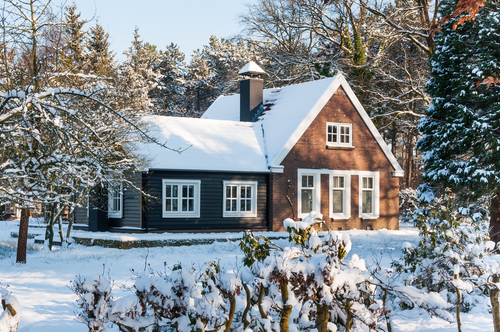Written on: December 9, 2019
 Winter is coming; is your house ready? We prepare ourselves for the winter by purchasing warmer clothes or installing snow tires on our vehicles, but many of us don’t think about preparing our homes as well.
Winter is coming; is your house ready? We prepare ourselves for the winter by purchasing warmer clothes or installing snow tires on our vehicles, but many of us don’t think about preparing our homes as well.
Still, just like anything else, your house is affected by cold weather and snow. By working through this simple, nine-step home winterization checklist, you can help keep your home warm and safe while keeping your energy bills low.
Your first order of business, when getting ready for the impending cold snap, is to ensure you’ll have heat when the chill arrives.
If you haven’t run your heating system in a while, turn it on to make sure everything is functioning correctly. Additionally, it’s wise to:
If you feel drafts in your home, your money could be going right out of the window – literally. Drafty windows and doors allow heated air to escape your home and cold air to enter it, which can increase your monthly heating bill by up to 25%.
To block drafts from coming through your windows and doors, consider adding the following material to door and window frames:
Some homeowners also use insulated curtains as extra reinforcement for window drafts.
If you’re unsure where the leaks are coming from, an energy audit can identify where leaks are occurring, and professionals can properly seal them in a matter of minutes.
Have you taken proper measures to protect your air conditioner against the harsh winter?
Cleaning and covering the condensing unit staves off the damage that can be done by wet leaves and debris which can accelerate rusting or cause freezing in your AC unit’s internal components.
Protecting your equipment means that when warmer months come around, your AC will be functioning properly.
If your roof shows signs of aging, not only will your heating bills increase this winter, but you may also be prone to leaks and water damage that can set you back some serious cash in repairs.
To see if your roof is winter-ready, check for:
If anything looks awry, have repairs made immediately to secure your home for heavy snowfall.
Take the time to remove all of the screen windows and doors in your house and replace them with storm windows and doors.
Besides adding a layer of insulation, and helping reduce air leaks, storm windows help protect your primary windows from winter elements, which screen windows would allow in.
If the power goes out in the middle of winter, it’s critical to be prepared to protect your family and your home. Many Northeasterners invest in a generator for a backup power supply in case the storms get too intense.
Before winter strikes, test your equipment to make sure it’s functioning when you need it most. If you haven’t in a while, give your equipment routine maintenance.
For more tips, read six ways to maintain your generator.
If your home has a fireplace, you should get your chimney inspected annually. In addition to the energy benefits it offers, it is crucial for your family’s safety. Every year, 25,000 homes across the country suffer from fires due to poor chimney maintenance.
As a member of the National Chimney Sweep Guild, Santa Energy can clean your chimney and inspect it for potential obstructions. We also check the chimney draft to ensure the chimney will draw up the fire and smoke properly and inspect the brick inside your chimney for gaps and exposed walls that are susceptible to danger from rogue sparks.
Protect your pipes from freezing this winter by insulating exposed piping, both inside and outside your home. Don’t overlook piping in your attic, basement, or crawl spaces that aren’t visible to you day-to-day.
To insulate the piping, wrap them with electrical heating tape first, then foam insulating sleeves (or more industrial material) to protect them from the winter weather.
If you plan to leave your home for the winter for an extended period of time, it’s always wise to consider shutting off your water altogether to avoid and costly mishaps from frozen pipes or water damage.
Additionally, if you have a sprinkler system at your home, make sure to also blow the water out of their pipes as well to reduce cracking in your system.
There are several small adjustments you can make to your day-to-day habits and home upkeep that will decrease your energy bills, even more, this winter. For example:
For more recommendations to optimize your home’s energy, or for more winterization tips, consider the following resources: